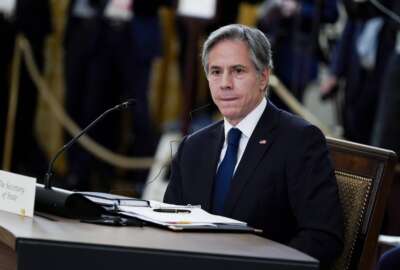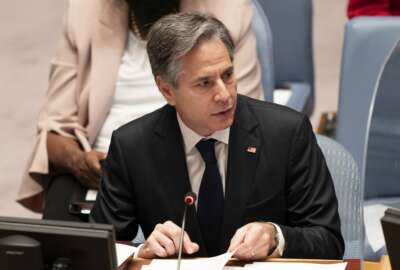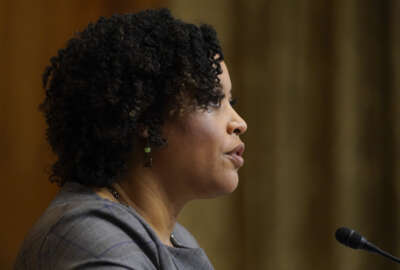State Dept. CDO makes diversity top management priority under data strategy
The State Department, as part of an agency-wide modernization effort, is focused on using its vast inventory to further its diplomatic mission.
The State Department, as part of an agency-wide modernization effort, is focused on using its vast inventory of data to further its diplomatic mission.
The State Department’s Enterprise Data Strategy (EDS), released in September, outlines the central role data plays in emerging technology, and how it’s needed to remain competitive against global threats.
The strategy calls for greater access to data across the department, increased data fluency across the workforce and better governance to ensure data security.
Secretary of State Antony Blinken highlighted the data strategy last month while announcing the launch of a new bureau for cyberspace and digital policy and a new special envoy for critical and emerging technology.
Blinken said the data strategy and the agency-wide modernization plan will help the agency go further in using “data to solve foreign policy challenges.”
“The department has vast and diverse datasets. But we haven’t done a good enough job making data available to you in a timely and useful way to help you make missions or management decisions more effectively. We’re changing that,” Blinken said last month.
State Department Chief Data Officer Matthew Graviss, along with an Enterprise Data Council, will oversee the implementation of the data strategy and look for opportunities to adapt or scale what’s working.
Graviss said in written statements to questions that the enterprise data strategy “marks a commitment to culture change, which is the first goal of the EDS.”
“Data is a critical tool of diplomacy. Our world-class workforce combines its mission expertise with data acumen to make evidence-based decisions that support the department’s mission of advancing the interests, safety, and prosperity of the American people,” Graviss said.
The data strategy focuses on upskilling employees and improving the overall data literacy of the agency’s workforce. Graviss said more than 2,200 employees have already taken classes at the agency’s Foreign Service Institute as part of its data fluency program.
“The great thing about this strategy is that we’re not starting from square one. A lot of bureaus and offices in the department have been doing great work for years — on public diplomacy, sanctions, foreign assistance, climate, security, conflict — and we are lucky to have a terrific collection of these bureaus represented on our Enterprise Data Council,” Graviss said.
Graviss said the Enterprise Data Council and the agency’s Center for Analytics spent a year on a “current state assessment” measuring the agency’s level of data maturity.
As part of this foundational work, the team interviewed officials from several agency bureaus and hundreds of employees. Graviss said his team also interviewed 25 external data experts, including CDOs from the Defense Department and USAID.
From those interviews, Graviss said his team highlighted recurring themes and challenges, and identified the following as areas in most need of improvement:
- Cultivating a data culture
- Accelerating decisions through analytics,
- Establishing mission-driven data management
- Enhancing enterprise data governance
Graviss said he and the Enterprise Data Council will propose themed campaigns to Deputy Secretary for Management and Resources Brian McKeon every six months, and will cover as many as a dozen agency priorities.
“These segments are manageable time periods where we can achieve measurable progress without getting stale,” Graviss said.
The rollout of the strategy, he said, began with a management theme of diversity, equity, inclusion and accessibility, as well as a mission theme of strategic competition, “which highlights the importance of using data as an instrument of diplomacy to engage competitor countries.”
Graviss said the Enterprise Data Council is working with Chief Diversity and Inclusion Officer Amb. Gina Abercrombie-Winstanley to make workforce demographic data more widely available, while upholding the privacy and security of individual employees.
“Specifically, we are building out data visualization tools that give decision-makers a snapshot of their workforce. Based on this data, we are also asking them to think about topics that merit further analysis. And the end goal here is to make sure the department is really a diverse, equitable, inclusive and accessible place where people want to come work—and where people want to stay,” Graviss said.
Abercrombie-Winstanley and her team will soon release their preliminary strategic plan, and will finalize the plan early next year.
Graviss said making workforce diversity data available will help managers and supervisors better understand DEIA roadblocks, especially when it comes to deciding who to promote to the Senior Executive and Senior Foreign Services.
“For those who manage actions in their bureaus and offices — like hiring, retention, training, awards — this data will help them identify and overcome any potential biases in those processes,” Graviss said.
Copyright © 2025 Federal News Network. All rights reserved. This website is not intended for users located within the European Economic Area.
Jory Heckman is a reporter at Federal News Network covering U.S. Postal Service, IRS, big data and technology issues.
Follow @jheckmanWFED






